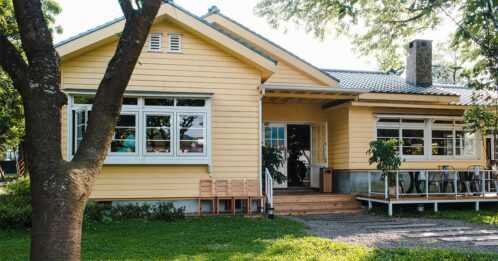Last updated on November 19, 2024
How Does A Reverse Mortgage Work In Texas: Reverse mortgage loans are a way for homeowners age 62 and older (in Texas, both borrowers must be 62 years or older) to convert the value of their home into cash or monthly payments without having to sell or move. Insured by the FHA Mortgage Insurance program (Mutual of Omaha Reverse Mortgage, LLC and its DBAs are not acting on behalf of or behalf of HUD/FHA or the federal government), the Department of Housing and Urban Development (HUD) permits these homeowners can borrow against equity or buy a new home based on the value or purchase price of that new home.
How Does A Reverse Mortgage Work In Texas?
This is how does a reverse mortgage work in texas:
- Eligible homeowners can choose to receive generally tax-free payments from reverse mortgage lenders, either every month, in a lump sum, or as a line of credit. The consumer should consult a tax advisor.
- Income, assets, and liabilities are verified.
- Refunds are not required as long as at least one borrower lives in your home, taxes, insurance, and HOA fees are paid on time, and the home is kept in good condition.
- Social Security and Medicare benefits are not affected.
- Reverse mortgage lenders will recover the loan amount, plus accrued interest and mortgage insurance when the last owner dies, decides to sell the house, or a family member chooses to buy the house (contact me for more information).
- When the loan is paid in full, any remaining assets associated with the property will be divided among your heirs. You must meet the conditions of the mortgage.
Things Keep In Mind About How Does A Reverse Mortgage Work In Texas:
Reverse mortgage borrowers still own their homes. Because no monthly loan payments are due (homeowners must keep property taxes, insurance, and HOA fees paid and must keep the home as their primary residence), the loan balance grows over time, meaning the remaining equity in the home decreases. , but your home value continues to rise.
Borrowers must continue to pay property insurance and property taxes during the term of the loan. It is also the borrower’s responsibility to keep track of the repairs. If a borrower fails to meet any of these obligations, it can become an immediate reason for the loan to expire. In this case, it would be paid in full.
What you need for a reverse mortgage
To be eligible for a reverse mortgage loan, you must meet the following criteria:
- You must be at least 62 years old.
- The house for which you borrow must be your main residence.
- As required by the federal government, if you receive a Home Equity Conversion Mortgage, you must attend a reverse mortgage counseling session.
While some types of reverse mortgages have rules about how you can use the money, most of the time you can use it for whatever you want, such as home repairs or travel. A reverse mortgage loan is intended for people of retirement age who want to reduce or even eliminate monthly mortgage payments so that their income is not so limited.
You must be 62 or older (in Texas, if married, both borrowers must be 62 or older). You should occupy the house as your primary residence for most of the year. Borrowers must own the house in full or have a low enough balance on the existing mortgage that it can be paid off with reverse mortgage proceeds.
In Florida, income is based on the youngest borrower, even if they are under the age of 62. Spouses under the age of 62 who are not borrowers must apply for the reverse mortgage loan and attend a HUD counseling session. In all states, HUD counseling is handled in person or over the phone by a HUD counselor.
Does my home qualify for a reverse mortgage?
First, your property must meet HUD’s property standards. The reverse mortgage must also be the sole mortgage or lien on the property. That means if there is a pending mortgage or lien on the property, it may be able to be paid off with the proceeds from the reverse mortgage.
Examples of Eligible Homes:
- Single-family homes with one unit
- 2-4 Unit Owner Occupied Homes
Ask your lender if these properties are eligible:
- Pre-made houses
- Apartments
- Developments
How is the loan amount determined?
The loan amount is based on:
- The age of the youngest borrower.
- The appraised value of the property and current interest rates
- Income, assets, and liabilities are assessed
What are my reverse mortgage options?
HECM: The Home Equity Conversion Mortgage (HECM) is the only reverse mortgage insured by the Federal Housing Administration (FHA). The FHA ensures that HECM lenders meet their obligations, determines how much HECM lenders can lend to qualified borrowers, and limits borrowing costs. Because this is a government-insured program, loan guidance from a HUD-approved advisor is required.
HECM offers 4 draw options:
- Monthly rental for a fixed period or life
- Credit line
- Lump sum
- Any combination of the above 3
Equities available by age
Age of borrower Range of percentage of capital available through an investment
- 62 39-40%
- 67 43-44%
- 72 45-46%
- 77 49-51%
- 82 55-56%
- 87 61-62%
- 90* 68-69%
*Equity does not increase after age 90 (subject to changes based on economic data)
How to Apply For Reverse Mortgage?
These basic steps describe the application process.
Your application
Your application begins the process with the lender. Specify fees, interest rates, loan amounts, and more.
Documentation
At this point, you will begin to collect the documents needed to be approved for the Reverse Mortgage. This could include things like mortgage statements, homeowners insurance, your household research, bank statements, IDs, pay stubs, or other proof of income and tax returns.
Reverse Mortgage Guidance
Your lender cannot proceed until you have completed the required counseling with a HUD-approved counselor. A list of approved agencies is available from the lender or online at www.hud.gov.
The assessment
To proceed, you will need to know the market value of your property through an FHA-approved appraisal ordered by the lender.
Subscription
For a subscription, the legal title is confirmed in a title search. If someone remains on the title who no longer lives in the house or has died, additional documentation may be required to clear the title. The insurer will also review the rating and financial evaluation and ensure compliance with the guidelines.
Closure
At closing, all aspects of the loan are reviewed and signatures on the final loan documents are obtained from a notary after a waiting period of three days, you will usually receive your reverse mortgage money or proceeds. With a Purchase, the loan is usually financed the same day. With a refinancing, you can choose to be paid in three ways: as a lump sum, as a monthly payment, or as a line of credit. Then it’s up to you: pay the bills, fix the house, help a family member, or use the money to enjoy your life.
Conclusion – How Does A Reverse Mortgage Work In Texas
How does a reverse mortgage work in Texas? A reverse mortgage is a tax-free loan that you take out of the equity that you have already built up. You receive payments instead of making them every month! Keep in mind, however, that you are still responsible for property taxes, maintenance, and your homeowner’s insurance if you take out a reverse mortgage.





